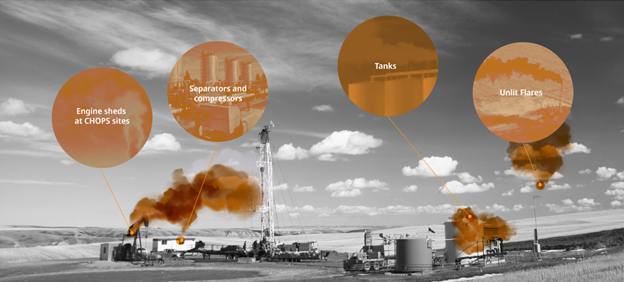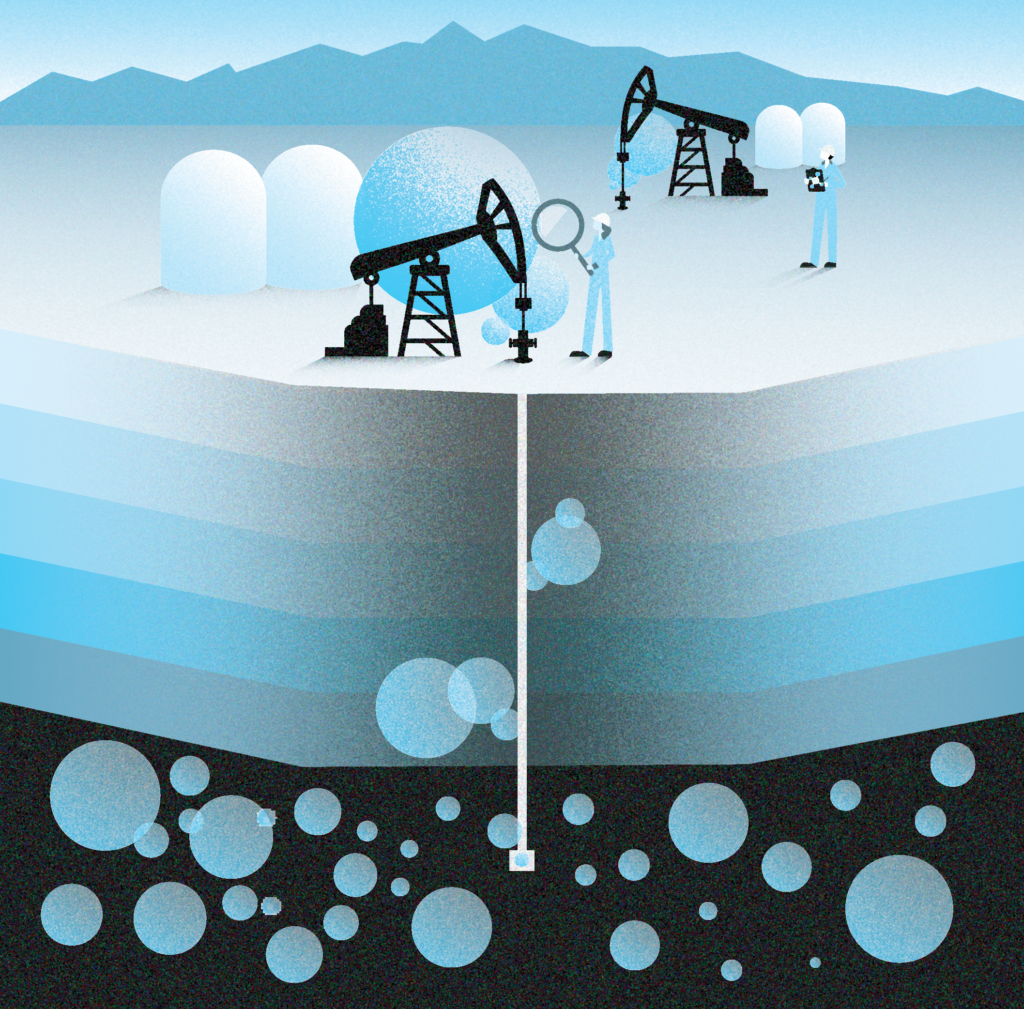New research uncovers a climate blindspot for Canada’s oil and gas industry
By Scott Seymour and Ari Pottens
The Canadian government is likely overlooking an important source of climate pollution. Surface casing vent flow and gas migration (types of underground leakage from oil and gas wells) has the potential to leak a lot of methane, but according to new research, neither governments nor companies know how much.
Canada has made a pledge to reduce 75% of the oil and gas industry’s methane emissions by 2030 as way to help combat climate change, but poor data and inaccurate estimates on well leakage makes it increasingly difficult to know if that goal is in sight.
New research reveals that across Alberta and British Columbia oil and gas well leakage could represent anywhere between 2-11% of the industry’s emissions. This huge range means policy makers can’t reliably know how this problem stacks up against other emission sources making it nearly impossible to set priorities or to craft regulations.
Why so much uncertainty?
Government agencies make assumptions to estimate emissions from the pollution sources because there are so many gaps in the data. Each agency uses a different set of assumptions yielding very different results. The researchers used all these assumptions and added additional plausible assumptions to better understand true scope of the problem. They found was that these variables can swing emission levels up or down by as much as 50%.
Key questions that lead to uncertainty include:
- How much gas is flowing from these sources?
- Were the emitters repaired on time?
- When did gas leaks first begin
Additionally, researchers found that aircraft studies, now commonly used to survey methane emissions, are unlikely to detect most of these emitters. Despite these sources adding up to a considerable amount of methane, each individual source is often too small to be detected by aerial surveys. This means that ground survey techniques (such as infrared cameras) will remain critical to detecting and quantifying these emissions.
This research points to the clear need for regulators to require accurate measurement of these sources so that we can track progress against our climate goals.
Making use of the research
With these findings showing the serious gap in our knowledge, oil and gas operators and policy makers are in a bind because we have no idea how big the problem really is. For some sources of methane emissions, we have reliable information about their size and significance. For example, we know that the top three sources in Canada are typically compressors, heavy oil-site venting, and storage tanks making them targets for rapid mitigation.

However, once we move beyond the first few emission sources, we have very little clarity about what deserves to be made a policy priority or what should most demand the attention of producers. But we’re not entirely without a roadmap for action. Canada can build on its current monitoring of these emissions by improving the quality of the reported data and by increasing testing frequency to ensure these sources are accurately captured in pollution inventories. This will be necessary to achieve Canada’s 75% reduction goal. Examining these methane sources helps effectively prioritize the steps and actions that will ensure we meet our climate targets.











